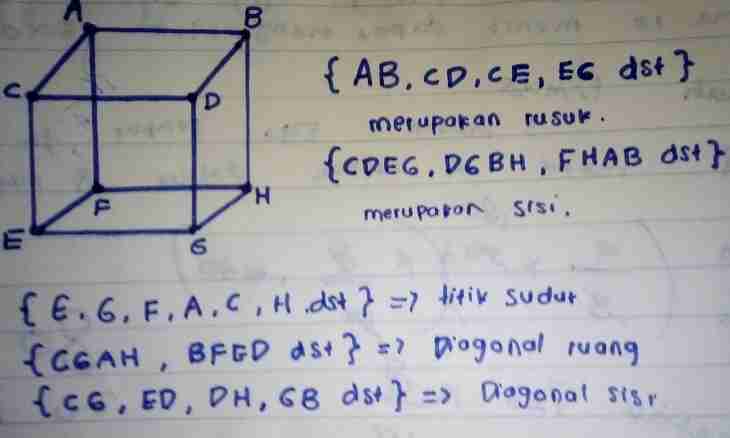Rhombus – the standard geometrical figure consisting of four tops, corners, the parties and also two diagonals which are perpendicular each other. Proceeding from this property, it is possible to calculate their lengths on a formula for a quadrangle.
Instruction
1. To calculate rhombus diagonals, it is enough to use the well-known formula fair for any quadrangle. It is that the sum of squares of lengths of diagonals is equal to the square of the party increased by four: d1² + d2² = 4•a².
2. Knowledge of some properties inherent in a rhombus and its diagonals connected with lengths will help to facilitate the solution of geometrical tasks with this figure: • The rhombus is a special case of a parallelogram, therefore, the opposite parties at it are also in pairs parallel and equal; • Diagonals are halved by a point of intersection, and a corner between them – a straight line; • Each diagonal halves corners which tops connects, being their bisectors and at the same time medians of the triangles formed by two adjacent parties of a rhombus and other diagonal.
3. The formula for diagonals is a direct consequence from Pythagorean theorem. Consider one of the triangles which turned out as a result of division of a rhombus diagonals on four parts. It is rectangular, it follows from properties of diagonals of a rhombus, besides, lengths of legs are equal to half of diagonals, and the hypotenuse is the party of a rhombus. Means, according to the theorem: d1²/4 + d2²/4 = a² → d1² + d2² = 4•a².
4. Depending on initial data of a task, additional intermediate actions can be made to determine unknown size. For example, find rhombus diagonals if it is known that one of them exceeds length of the party on 3 cm, and another is one and a half times more.
5. Decision. Express lengths of diagonals through the party which in this case is unknown. Designate it for x, then: d1=x+3; d2=1.5•x.
6. Write down a formula for rhombus diagonals: d1² + d2² = 4•a²
7. Substitute the received expressions and work out the equation from one variable: (x + 3)² + 9/4·x \= 4 · x \
8. Lead it to square and solve: x \-8 · x – 12 = 0D = 64 + 48 = 110x1 = (8+ √ 110)/2 ≈ 9.2; x2 of a rhombus is equal to 9.2 cm. Then d1 = 11.2 cm; d2 = 13.8 cm.
